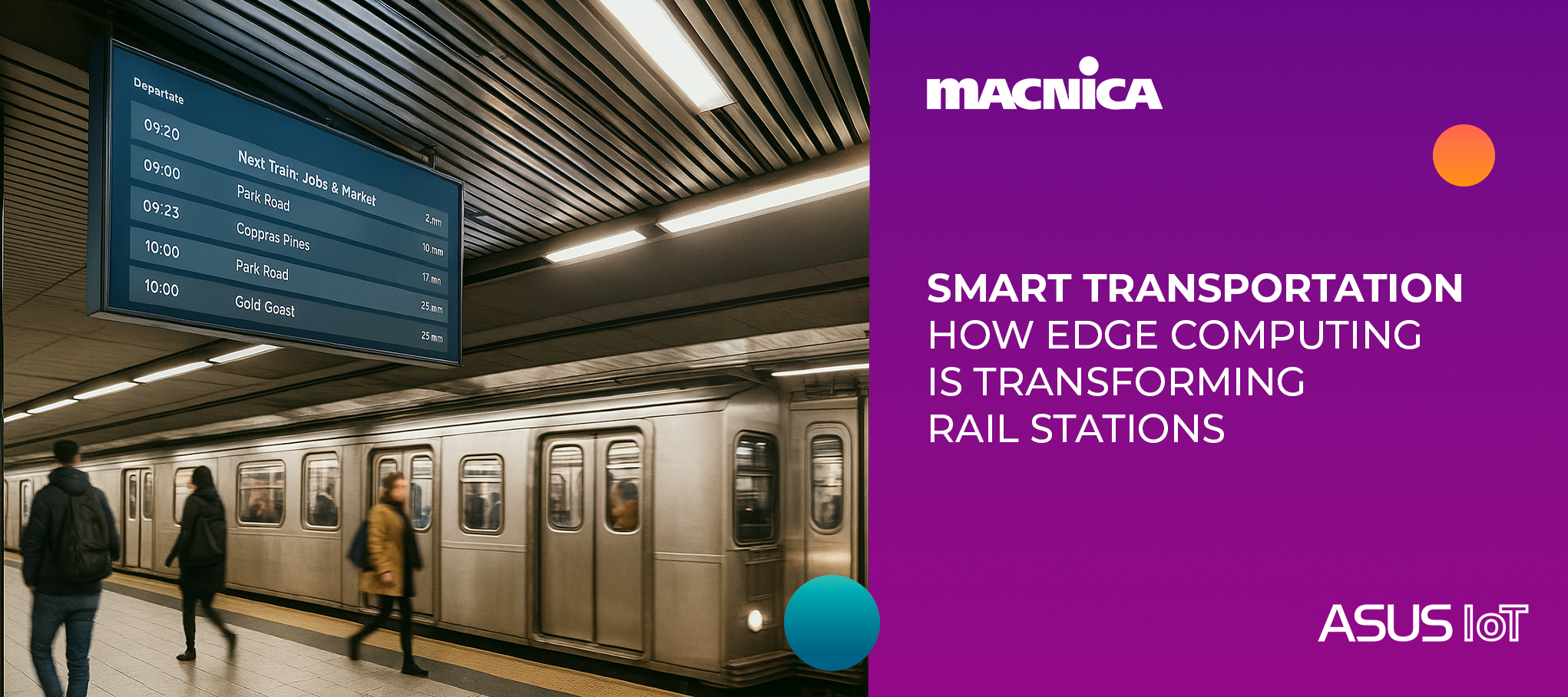Embedded Computers Can Enhance Digital Signage at Rail Stations
Digital signage has revolutionized communication by replacing static posters with dynamic displays like LCDs, LEDs, and projectors. It allows real-time updates, targeted messaging, and interactive experiences that were not possible with traditional signage.
Driven by internet connectivity and affordable hardware, digital signage is now widely used across sectors like retail, healthcare, and transportation. In Smart City environments, it plays a crucial role by delivering timely information and enhancing public engagement through advanced features such as Cloud management and remote control.
Better Passenger Experience in Rail Stations
In rail stations, digital signage plays a key role in improving the overall passenger experience. By delivering real-time updates on train schedules, platform changes, and delays, it keeps travelers informed and reduces uncertainty. This timely information helps to streamline passenger flow, minimize confusion, and enhance safety during disruptions by quickly broadcasting emergency alerts or instructions.
Beyond information, digital signage also creates new opportunities for stations to generate revenue through advertising, while contributing to a more modern and efficient travel environment. The result is greater operational efficiency and higher passenger satisfaction.
Choosing the Right Hardware for Rail Signage
Deploying digital signage in rail stations demands robust, high-performance hardware. Displays must offer high brightness and weather resistance to remain visible in outdoor and sunlit areas. These screens are typically powered by media players that manage content rendering and synchronize with station control systems for real-time updates.
Given the challenging environment — heavy foot traffic, temperature shifts, dust, and potential vandalism — all equipment must be rugged and durable. Strong connectivity, via fiber-optic, LAN, or internet, is crucial to support live updates, remote management, and seamless integration with emergency systems. Hardware reliability is key to maintaining smooth communication and efficient station operations.
Lower Power Consumption, Higher Operational Savings
With dozens of digital displays in rail stations, energy consumption can quickly become a major expense. That’s why low-power solutions are critical — not only to cut operational costs but also to support sustainability efforts. Energy-efficient embedded platforms, along with smart features like automatic brightness adjustment, help reduce overall power usage.
Beyond saving energy, using low-power, reliable hardware extends the lifespan of the system. In busy, high-traffic environments, durability and upgradability are vital. The ability to update hardware and software after installation ensures the signage system stays compatible with evolving technologies, minimizes downtime, and avoids frequent costly replacements, offering a more future-proof investment.
Robust Hardware Solutions for Railway Stations
The ASUS IoT Jetson™ Series offers embedded computers specifically designed for demanding environments like railway stations. With their fanless industrial design, these systems deliver reliable performance in the face of dust, vibrations, and extreme temperatures.

Powered by NVIDIA®, they handle real-time data processing and support high-resolution digital displays, while maintaining low power consumption. Their robust construction, long lifecycle, and rich connectivity options make them the ideal foundation for modern passenger information systems, ensuring that stations can operate efficiently, securely, and sustainably over time.
Supporting the evolution of Smart Cities, Macnica ATD Europe delivers ASUS IoT embedded computing platforms that combine durability, intelligence, and energy efficiency.
Contact us to discuss how we can support your next smart transportation project.

